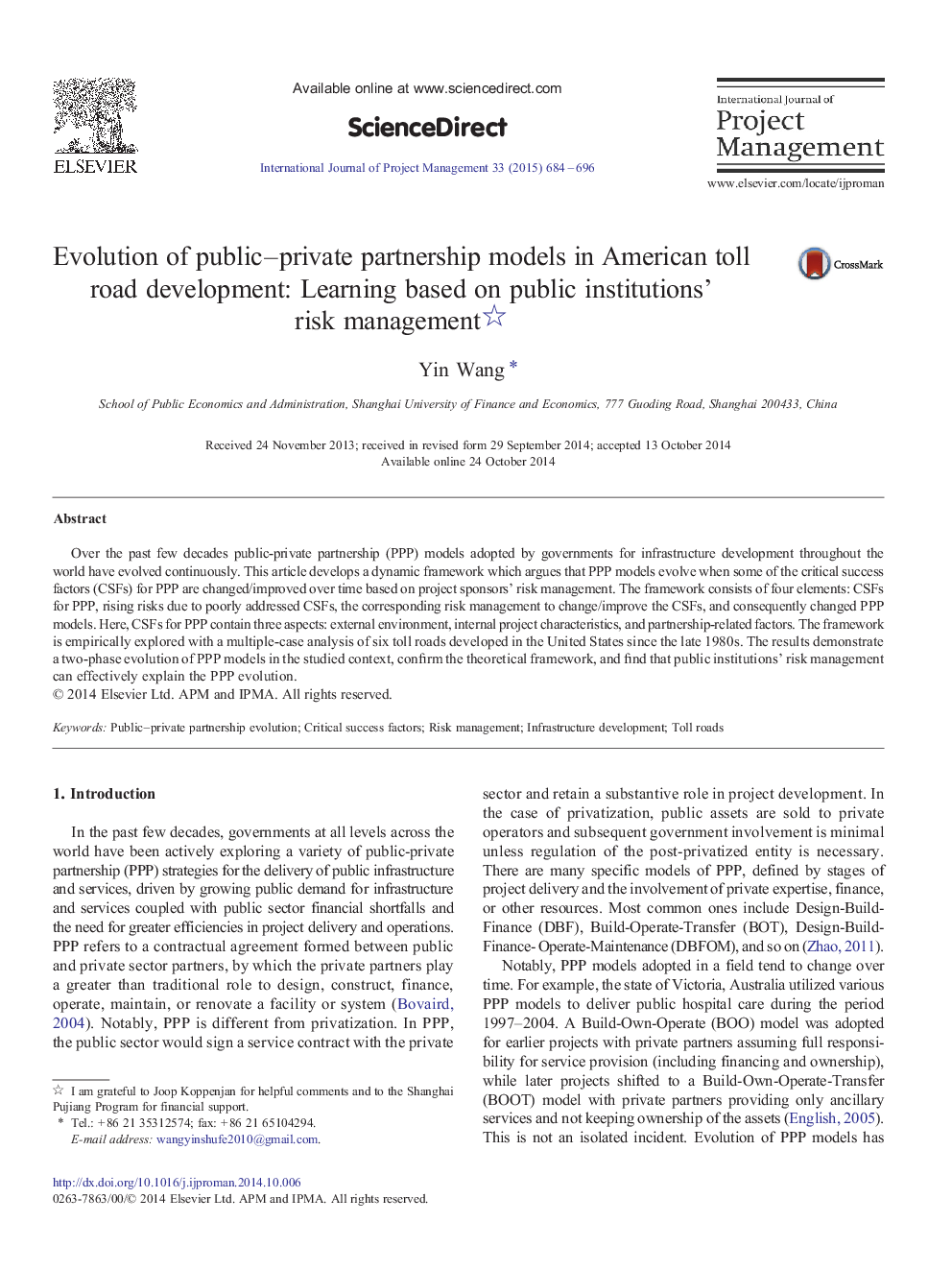| Article ID | Journal | Published Year | Pages | File Type |
|---|---|---|---|---|
| 275720 | International Journal of Project Management | 2015 | 13 Pages |
•There was a two-phase evolution of PPP models in American toll road development since the late 1980s, from a private development model to a collaborative partnership model.•When project risks arose as a result of poorly addressed critical success factors for PPP, public institutions took risk management measures to better manage these factors, leading to changed PPP models for future projects.•Public institutions should enhance PPP-related government capacity and build effective institutions and legal systems for successful PPP development.
Over the past few decades public-private partnership (PPP) models adopted by governments for infrastructure development throughout the world have evolved continuously. This article develops a dynamic framework which argues that PPP models evolve when some of the critical success factors (CSFs) for PPP are changed/improved over time based on project sponsors' risk management. The framework consists of four elements: CSFs for PPP, rising risks due to poorly addressed CSFs, the corresponding risk management to change/improve the CSFs, and consequently changed PPP models. Here, CSFs for PPP contain three aspects: external environment, internal project characteristics, and partnership-related factors. The framework is empirically explored with a multiple-case analysis of six toll roads developed in the United States since the late 1980s. The results demonstrate a two-phase evolution of PPP models in the studied context, confirm the theoretical framework, and find that public institutions' risk management can effectively explain the PPP evolution.
